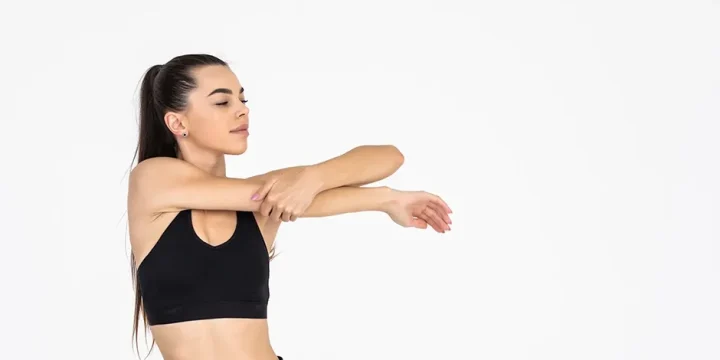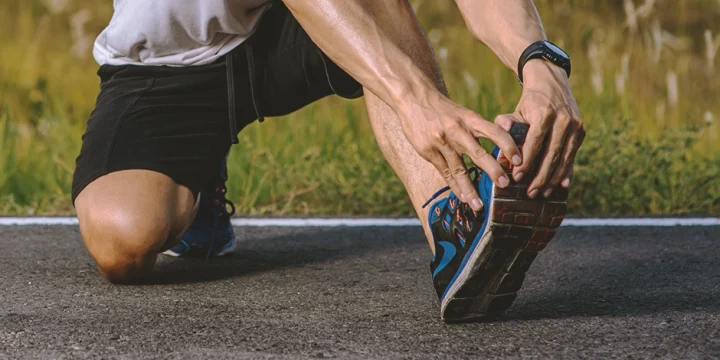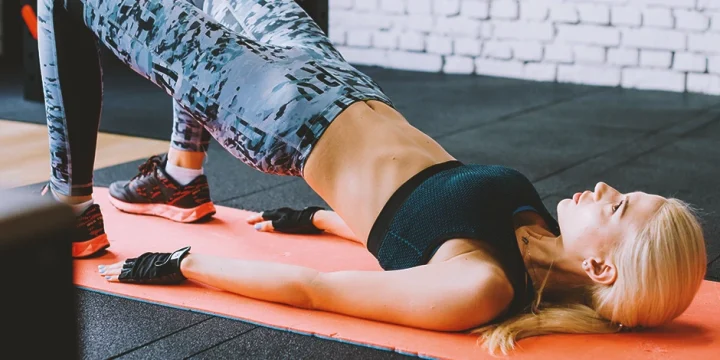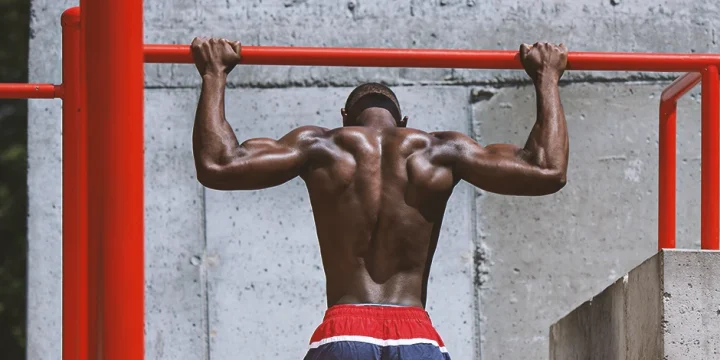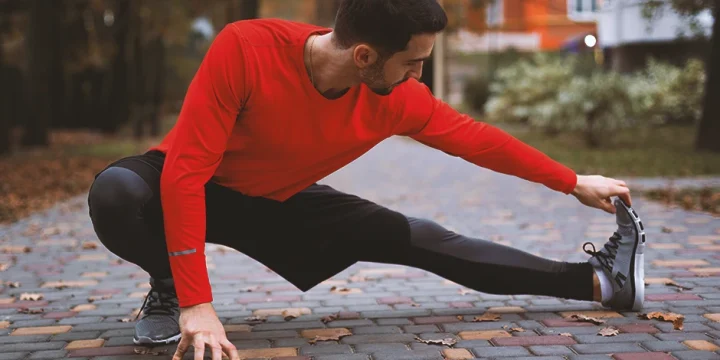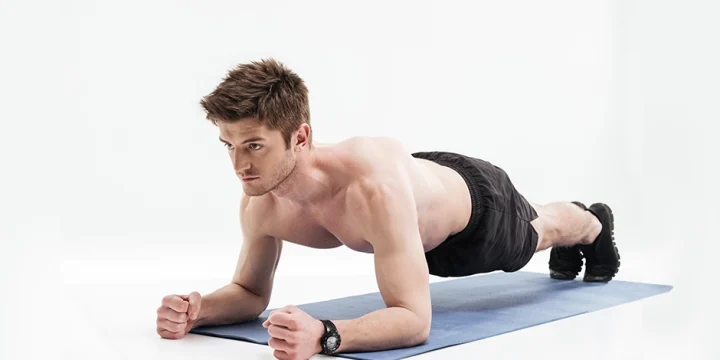While your traditional workout machines and fitness programs will bring you a very long way to strengthening your body with maximum weight loads, accessory exercises allow you to take a more targeted approach for certain areas.
What I love about them is that they include slight variations that don’t mean more weight loaded on but a change in the movement.
So, I teamed up with five other personal strength coaches to come up with the best options and show you exactly what the benefits will be.
Quick Summary
- Typical accessory exercises would include conventional deadlifts, push-ups, and bench press, but there are many more.
- You can also achieve overall bigger muscle proportions along with great core stability by starting to add some of our recommended accessory exercises.
- According to WebMD, incorporating exercises that aren't part of your daily routine can introduce sufficient variation in body movements, leading to increased muscle hypertrophy and more effective bulking phases.
- Based on my years of training, accessory exercises are the unsung heroes in sculpting a well-rounded and powerful physique.
Our Best Accessory Exercise Recommendations

Here are the top exercises that we researched and tested out as a team to see how effective they were over several weeks.
1. Conventional Deadlift
I typically recommend a conventional deadlift with a barbell, but for home workouts, heavy dumbbells or resistance bands are effective alternatives.
Instead of continually adding weight for upper body and grip strength, try slowing the movement and pausing mid-lift.
In my experience with clients, adding a top pause significantly enhances forearm training, preparing them for heavier loads.
2. Weighted Hip Thrusts
One of my favorite accessory exercises, now a core part of my routine, is the weighted hip thrust.
Lie on a supportive mat, positioning a barbell over your hips.
Start with a manageable weight to maintain balance.
As you lift your hips, keep the bar level; this movement is great for muscle recovery and rehabilitation.
Holding at the top before lowering builds strength, enhances mobility, and improves stability.
3. Bench Press
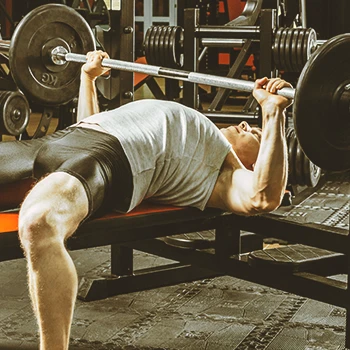
The standard bench press uses a heavy barbell with a wide grip for control.
I recommend the close-grip bench press as an accessory exercise. This narrower grip challenges your balance and activates different muscles.
It's more demanding, often requiring a spotter, but it boosts mental engagement and motivation.
From my coaching experience, this method not only makes workouts more rewarding but also lessens shoulder strain and effectively builds arm muscle mass.
4. Rear Delt Fly
When you work on cable machines for your shoulders and back, you’re often forced into a certain body position that doesn’t offer much flexibility.
For rear delt fly, you grab hold of two dumbbells, ensuring a firm grip, and lean your upper body forward, maintaining a straight back.
Lift the weight up in a lateral movement while keeping your arms straight.
Hold the weights at the top of the movement once they are shoulder height, and then slowly lower them down again.
It’s one of those bilateral exercises that will provide significant shoulder stability and also strengthen your upper back.
Also check our article on how to do cable rear delt fly.
5. Bent-Over Rows
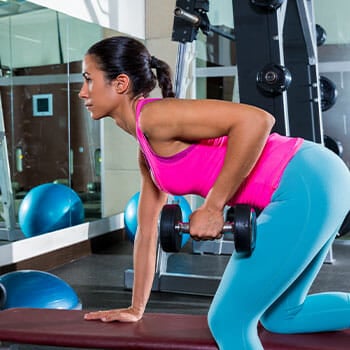
To strengthen your upper back and shoulders, incorporate single-arm bent-over rows into your main lifts.
This exercise, which I often use with clients for better range of motion, involves leaning forward, resting one elbow on the knee, and lifting a dumbbell with the opposite hand to your chest.
Hold briefly, then lower. It's excellent for building lat strength.
Remember to repeat on the other side for balance.
6. Behind The Neck Overhead Presses
Here is a great way to train your shoulders and upper back in a way that will take some time to get used to.
Set yourself up with a barbell across your shoulders as if you’re getting ready for an overhead squat.
Slowly push the bar up over your head, hold it for a second, and then lower it down again.
You can also alternate between behind-the-head and in-front-of-the-head movements to slightly adjust the front and back delts being targeted.
It’s an excellent way to eliminate weak links in your shoulders.
7. Back Extensions
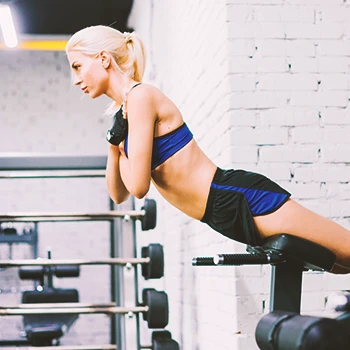
Adjust the back extension platform or GHD machine to your height for comfortable support.
Lower your body to form a right angle, then engage your core to rise.
As a fitness coach, I've found adding a weight plate near your chest intensifies the exercise, enhancing muscle engagement with fewer reps.
This effectively targets the erector spinae muscles, crucial for posture and supporting diverse lifts, as corroborated by Physiopedia [1].
See also our article for the other back extension alternatives.
8. Squats
You simply can’t overestimate the importance of improving your squat performance as part of your training program.
And if you have weak hamstrings and quads, then these should be something you regularly do.
Aim to do your bodyweight squats with the best possible form and get as low down as possible.
Don’t increase the weight load until you’re able to get all the way down, as an increased range of motion will help improve your athletic performance as shown by research published in the National Library of Medicine [2].
“If you have a limited range of motion, that means you cannot move a specific body part or a joint through its normal range.”
- Erin Pereira, PT, DPT
I also rate squats a lot higher than leg presses and would suggest you prioritize them.
9. Weighted Pull-Ups
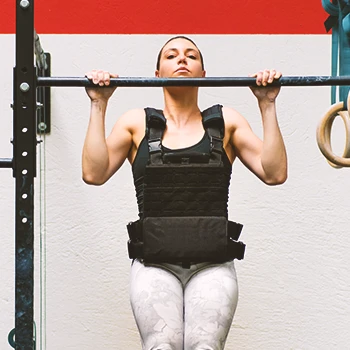
Weighted pull-ups are an excellent alternative to traditional big lifts for strengthening back and shoulder weaknesses.
In my fitness coaching experience, advanced bodybuilders benefit from this variation when regular pull-ups become too easy.
By adding a weighted vest or attaching a weight plate, the extra pounds intensify the exercise.
Achieving fatigue after about ten reps indicates a productive workout, enhancing muscle development efficiently.
Benefits Of Accessory Exercises

Here are three main benefits of adding accessories to your training program:
1. Improved Strength
When you do exercises, you’ll find that you’ll achieve significant strength improvements in multiple muscle groups.
You’ll quickly find yourself tempted to add heavier weights, but I would always suggest slowing down your movements and increasing the range of motion before you pile on weight.
With the increased strength, you might also notice more endurance and less fatigue, which should ultimately get you to your strength and fitness goals faster.
2. Better Muscle Proportions

With targeted accessory training, you’ll find that you have much greater control over your muscle proportions.
This is a key part for bodybuilders who achieve a certain level of bulking and want to now reshape their physique in certain areas.
It’s when making good use of your training time is vital to separate you from the typical amateur.
3. More Muscle Mass
The other thing you’ll find is that doing these types of exercises will help you pile on more mass in pretty much every muscle group.
According to WebMD, building muscle with exercises that you don’t do every day can add enough variation to the body movements to trigger more hypertrophy and, ultimately, more successful bulking phases [3].
And when you can achieve that without hitting a sticking point or plateau, then it will also mean a lot less frustration.
FAQs
How Many Accessory Workouts Should You Do?
You should aim to do three or four accessory workouts in each training session. For most people, that should be enough to add some variation and target muscles in a different way. Adding more is not always going to be a good idea, but you can experiment as you start seeing improvements.
Should You Go To Failure On Accessories?
Yes, you should go to failure on accessories. The more strain you add and the more of a burning sensation you create, the more your muscles will react with faster growth. You can often achieve this with a slower movement and less weight.
References:
- https://www.physio-pedia.com/Erector_Spinae
- https://www.ncbi.nlm.nih.gov/pmc/articles/PMC6977096/
- https://www.webmd.com/fitness-exercise/difference-between-strength-hypertrophy
About The Author
You May Also Like
